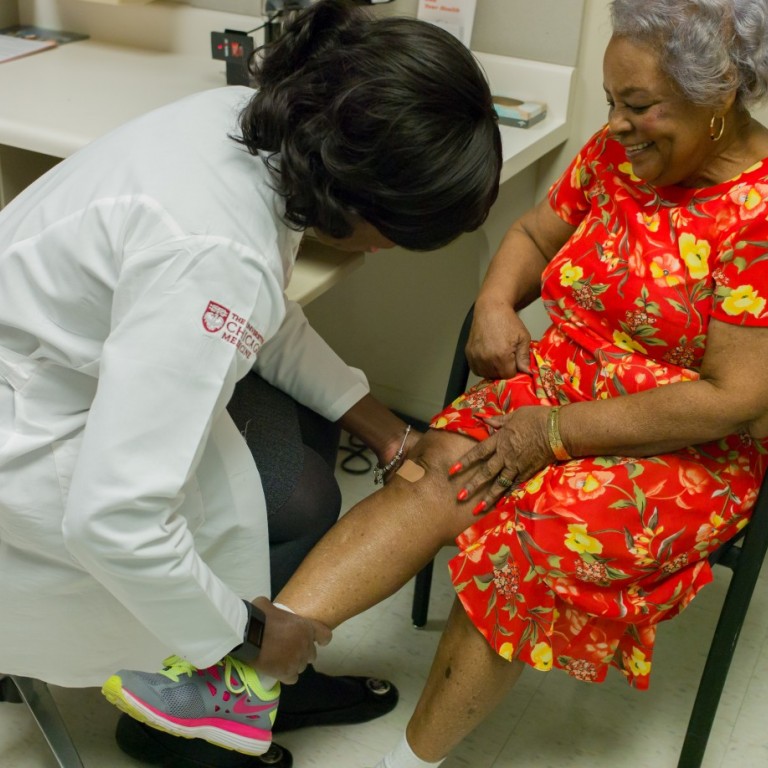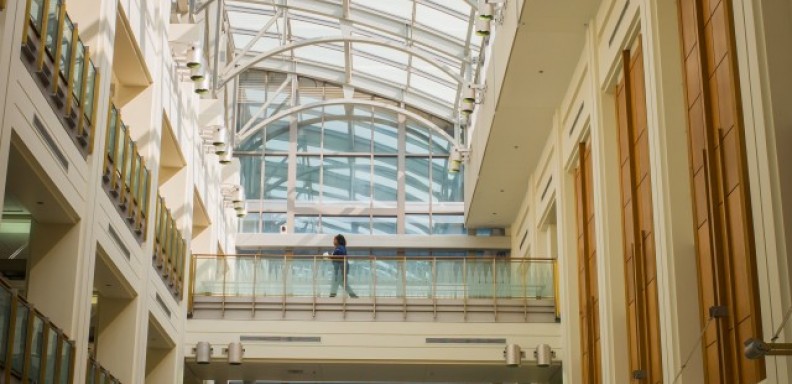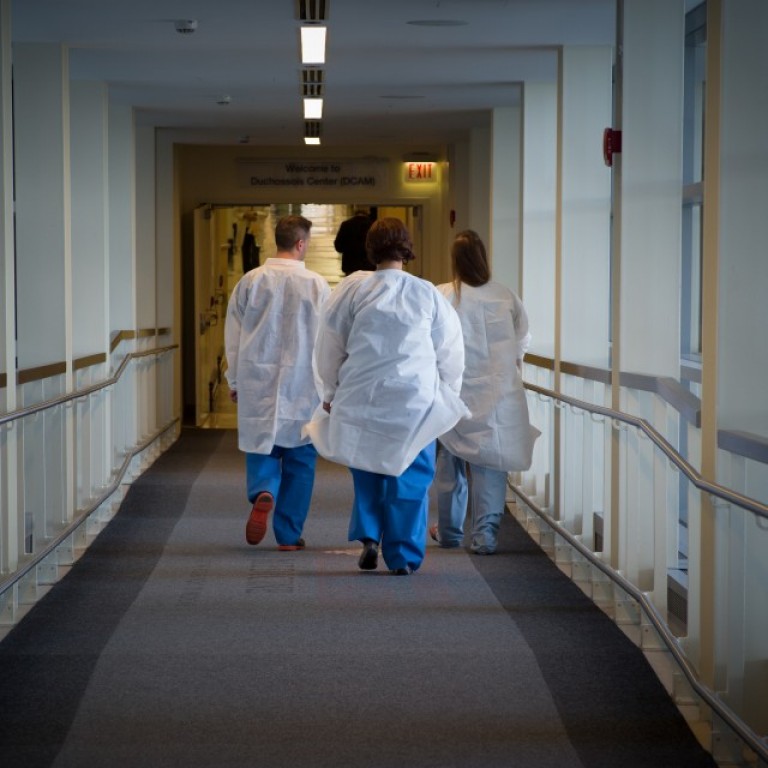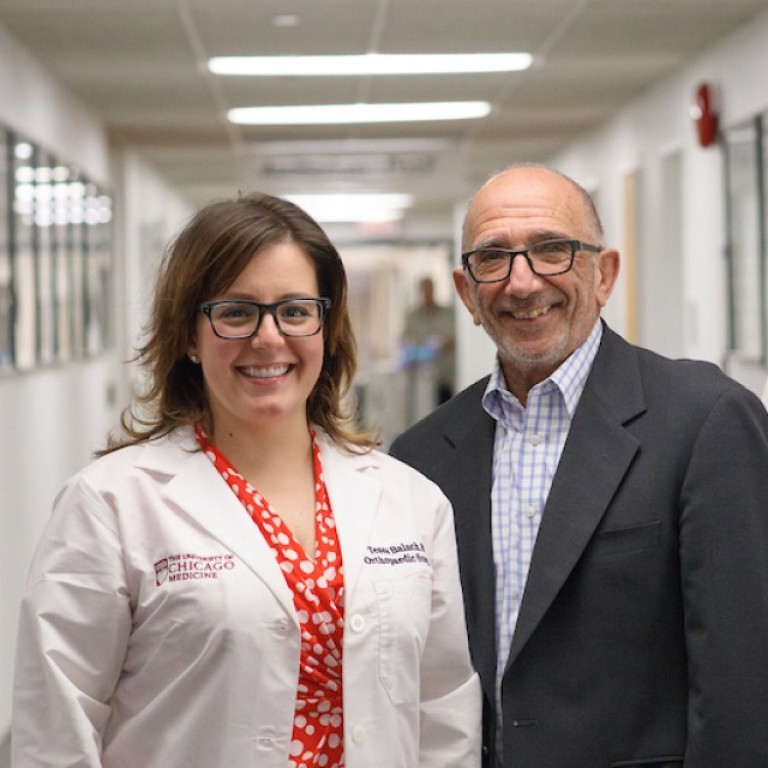The appearance of COVID 19 in our community and our workplace is what a consultant would flippantly term a ‘disrupter’. We, on the other hand, would more likely comment that ‘this changes everything’. The truth is probably in the middle, lying between business colloquialisms and academic hyperbole. What I hope to do in this brief piece is to provide, from a chairman’s perspective, the top five lessons I have learned/observed during the Department’s COVID 19 journey. This list is by no means exhaustive, but I hope you will find it as instructive to read as I found it to write.
Lesson One: There will always be work for orthopaedic surgeons – even in a pandemic.
On March 17, UChicago Medicine shut down all elective surgical procedures, allowing only emergent and urgent surgeries to be scheduled. We thought that, like many New York hospitals, our ORs would soon be serving as an ICU ward to house COVID 19 patients on ventilators. Thankfully, this never occurred, but we nonetheless persisted with our plan for a number of weeks, only allowing to be scheduled those surgical procedures that could not – even in a pandemic – be delayed without a serious adverse outcome. During this time, we observed that the rate of trauma activations (10-15 per day) did not diminish; neither did the rate of other serious fractures, infections, tendon and nerve injuries, and other urgent orthopaedic conditions. The rate of requests for transfer from outside hospitals (fractures, infections, children, etc.) actually increased. The effect was such that, for a number of weeks (before some OR time was reopened for medically-necessary but non urgent cases), orthopaedics was over 60% of the total surgical case volume performed in the hospital! My gratitude to our team for working hard during this time, and for being there to provide care for any and all who needed it during this very unique time.
Lesson Two: We have very smart, thoughtful, and innovative people.
Yes, I know this is The University of Chicago and, of course, I already knew we had the smartest people anywhere; still, I want to make this point. Over the course of this pandemic, I’ve talked to leaders of training programs on our campus and across the nation, and I’ve reviewed numerous manuscripts submitted to orthopaedic journals – all on the topic of how the program organized itself to balance the tasks of providing care for patients with that of protecting the members of the care team. I have concluded that the plan devised in our Department by a team of faculty, residents, and providers is among the most intelligent, thoughtful and innovative I have heard of anywhere in the nation. Our plan assured the provision of care by dividing the department into a series of teams – teams carefully constructed to assure that the residents, APNs, and faculty on each team complemented one another and could cover all possible subspecialty and patient care needs. Each team would never come into contact with another team, limiting the possibility of cross-contamination of teams. Finally, the rotation schedule of the teams took the incubation period of the virus into account, assuring that the incubation period would have passed before a team rotated back on service. This was, in my view, masterful and provided the optimal environment in which to balance patient care and the protection of our teams. This is but one example of innovative and thoughtful approaches we have operationalized, but I hope clearly makes the point I intended.
Lesson Three: Technology truly works for connecting people – but apparently you capitalize on this only when you truly don’t have an alternative.
At every university at I have worked or visited in my career, technology for distance learning has been attempted, usually with limited success. Whether having a remote location from which residents could attend educational conference (as we did with NorthShore in the past), broadcasting grand rounds to remote locations (as nearly everyone has tried), or conducting and publishing webinars, podcasts, and videos, all efforts seemed to receive the same sort of feedback -- ‘meh’. Fast forward to March 2020 and a crisis that mandates that we must all engage while each being in different rooms and, suddenly, we find that ‘virtual’ conferences and meetings can actually be very effective. Sure, the technology has improved, but I firmly believe that it was the necessity this pandemic has induced that led us to embrace virtual meeting technology. Now, I feel that our sign-out conferences conducted via Zoom are more well-attended by more engaged department members than they ever were when they were in-person (we have about 40 participants every morning and every evening – impressive). Furthermore, viewing of the x-rays during conference is actually better on individual computer screens than it was on one screen located at the front of a conference room. Educational conference has similarly evolved with the use of technology; the ease with which we can now make available readings, videos, websites, and other content – all to be absorbed by the learners prior to the actual lecture – has made this the rule rather than the exception. This has allowed the lecture session itself to be more of a discussion between engaged participants than a one-way didactic communication. I believe (and firmly hope) that, when social distancing is a distant memory, we will continue to make use of technology and virtual conferences to enhance the educational experience of learners and the level of engagement of our entire department.
Lesson Four: Contrary to logic, forced distancing can create enhanced engagement.
This point I want to simply make outright: engagement of and by members of the Department has notably increased since this crisis started, since we started social distancing, and since we organized into teams who never see one another in person. Yes, this is entirely true – forced distancing has increased the level of engagement – across the board. I mentioned above how I have observed this at our sign-out conferences, but there are numerous other examples as well. Faculty members and APPs are observed, with great frequency, signed into the daily educational conference for residents; this is something never seen when conferences were in-person. One faculty member who is almost universally signed into these conferences commented that “I am learning a lot about other areas of orthopaedics, but I am learning even more about my partners, their educational styles, and how I can be an even better educator”. Faculty meeting attendance (via Zoom) has been better than ever, intra-faculty communications around patient care hand-offs is at an all-time high, and volunteerism by the entire department to help out with every aspect of our work, the care of our patients, and the wellness of our team is at an impressive level. This is completely counter-intuitive, but being forced to be apart seems to have brought us closer together than ever.
Lesson Five (and concluding statement): We will emerge from this a stronger unit than we were when it began.
Each of the preceding paragraphs leads up to this final point. While I acknowledge it is cliché to state we will emerge from a crisis stronger than we were before, this is not a conclusion I make simply to sound inspirational: it is, I firmly believe, based on clear and incontrovertible evidence. The observations I have made above are but a small number of examples of evidence that the Department has rallied during this crisis, become a closer and more cohesive group during this crisis, and has innovated as a result of this crisis. What we have experienced, what we have learned, what we have felt, and what innovative methods we have devised will all contribute to lasting change in the Department, in our educational programs, and in our relationships with one another. The Department will never again be like it was pre-COVID: it will be healthier, more focused, and far stronger!



